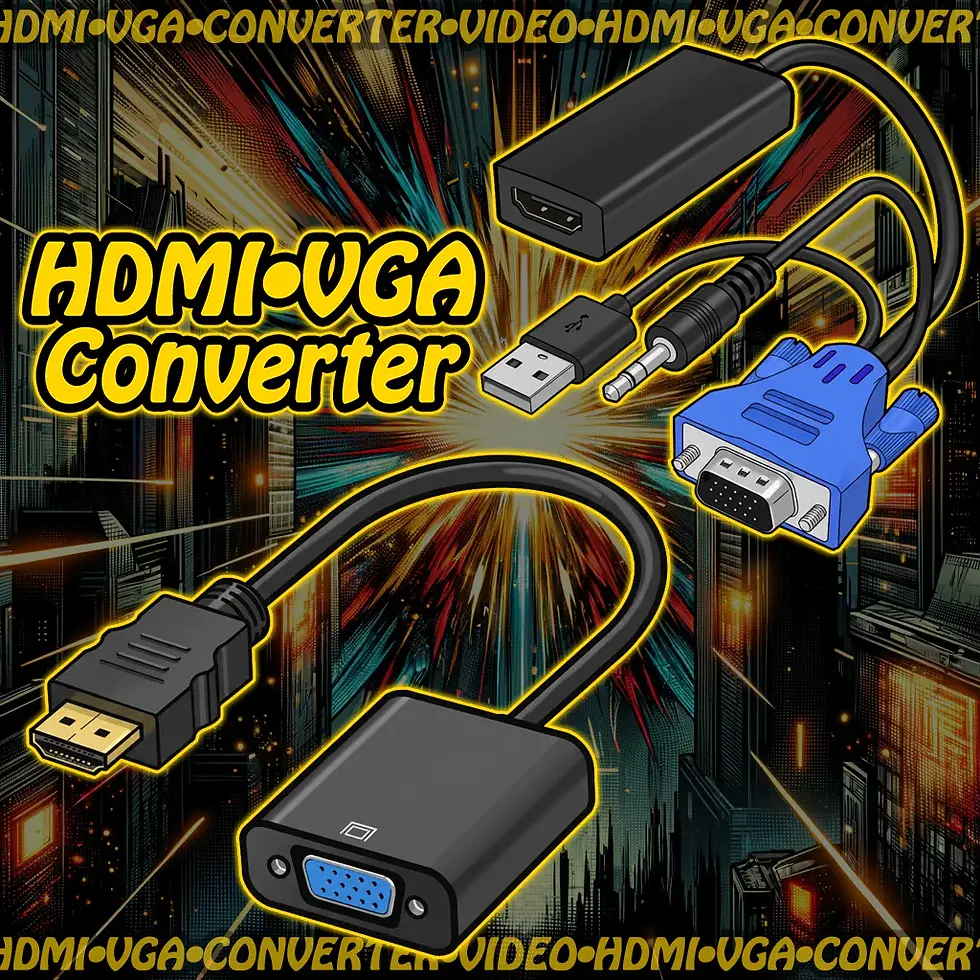🔁 HDMI ↔ VGA Converter Guide
Converts HDMI to VGA and, with a different converter, converts VGA to HDMI.
🔧 Converter Formats & Use Cases
🔌 HDMI to VGA Converter
- Input: HDMI (digital video/audio)
- Output: VGA (analog video), often with 3.5mm audio out
- Use Case: Connect modern laptop or console to legacy VGA projector or monitor
🔁 VGA to HDMI Converter
- Input: VGA (analog video) + 3.5mm audio + USB power
- Output: HDMI (digital video/audio)
- Use Case: Connect old PC or retro console to modern HDMI TV or monitor
🖥️ Compatible Devices
💻 HDMI to VGA
- HDMI laptops, desktops, game consoles
- VGA-only projectors, monitors, classroom AV carts
🖥️ VGA to HDMI
- Legacy desktops, embedded systems, retro consoles
- HDMI TVs, monitors, projectors
✅ Common Uses
- 🎥 Presentations using modern laptops with legacy projectors
- 🧠 Reviving old PCs for use with HDMI screens
- 🎮 Playing retro games on HDMI-only displays
- 🧪 Bridging AV setups across generations
- 🏫 Classroom and kiosk setups with mixed-era hardware
🧠 Signal Format Notes
- ⚙️ HDMI: Digital video + audio
- 🔌 VGA: Analog RGBHV (video only)
- 🔊 Audio: 3.5mm stereo input required for VGA → HDMI
- ⚡ Both converters require active circuitry—passive cables won’t work
- 📉 Max resolution typically 1080p for both directions
⚠️ Things to Watch Out For
- 🚫 These converters are directional—not reversible
- 🔌 HDMI to VGA may need USB power depending on model
- 🔋 VGA to HDMI always needs USB power and audio input
- 📉 VGA signal quality degrades over long cables—keep under 25 ft
- 🧯 Cheap units may cause latency, scaling issues, or poor color fidelity
🛠️ Quick Tips for Beginners
- 🧠 Always check the direction before buying—HDMI → VGA ≠ VGA → HDMI
- 🔌 Power the converter via USB before use
- 🎧 For VGA → HDMI, plug audio into the converter—not the display
- 🧼 Clean VGA contacts—analog signals are sensitive to dust
- 🏷️ Label your adapters clearly to avoid mix-ups in multi-device setups



